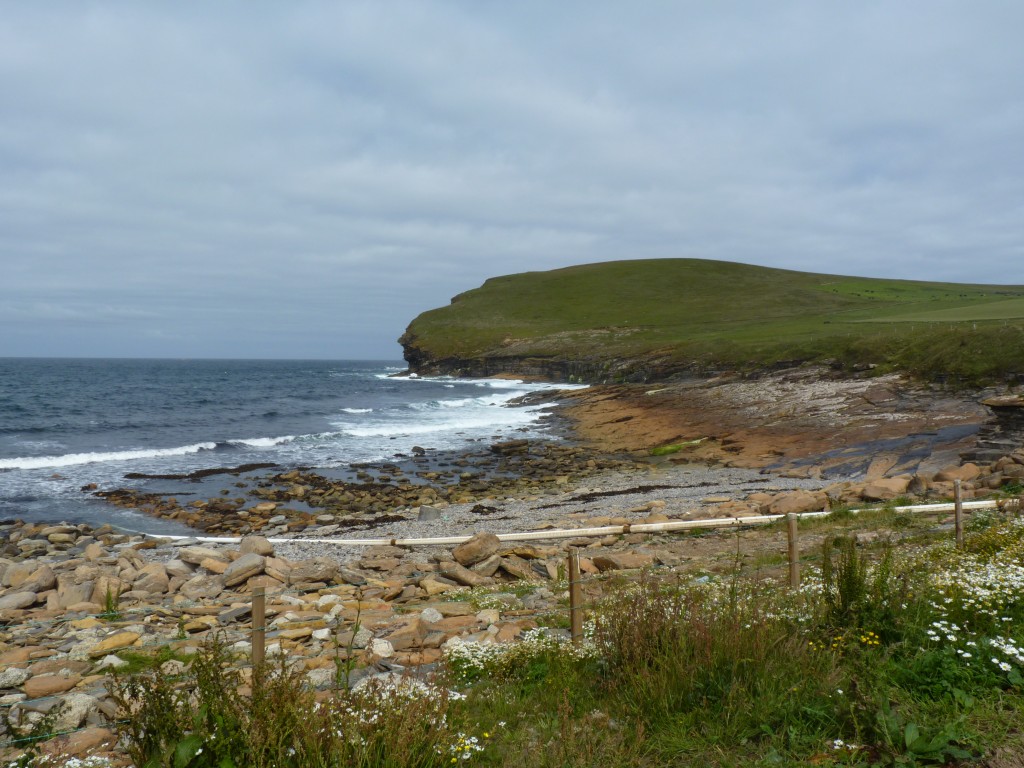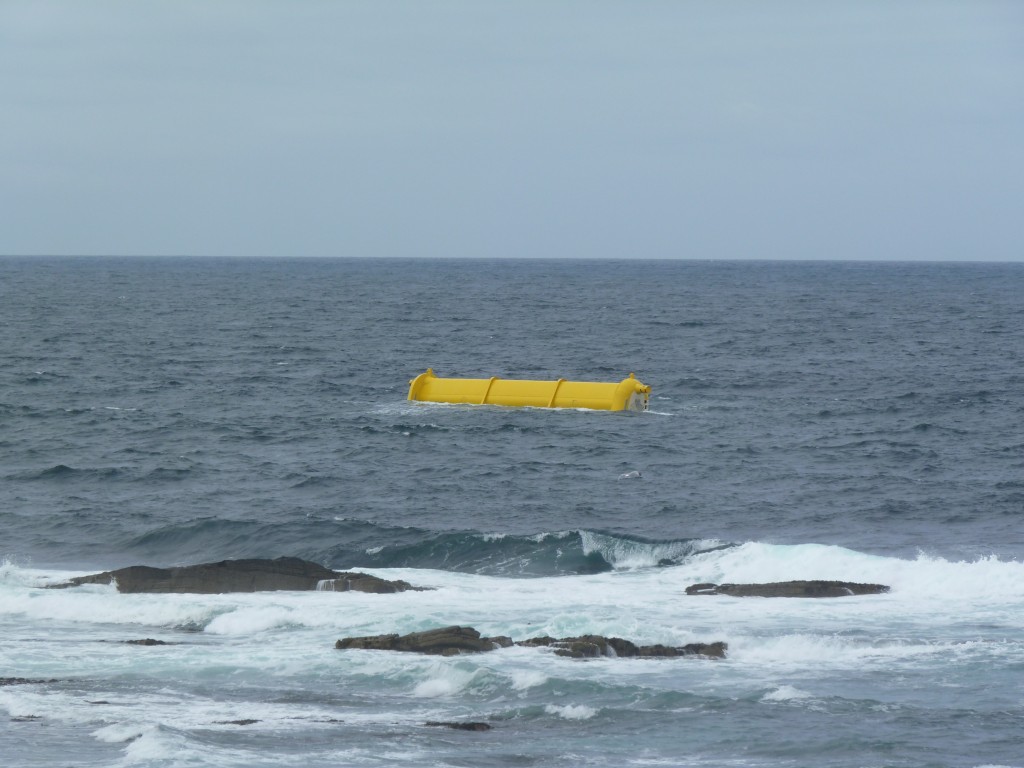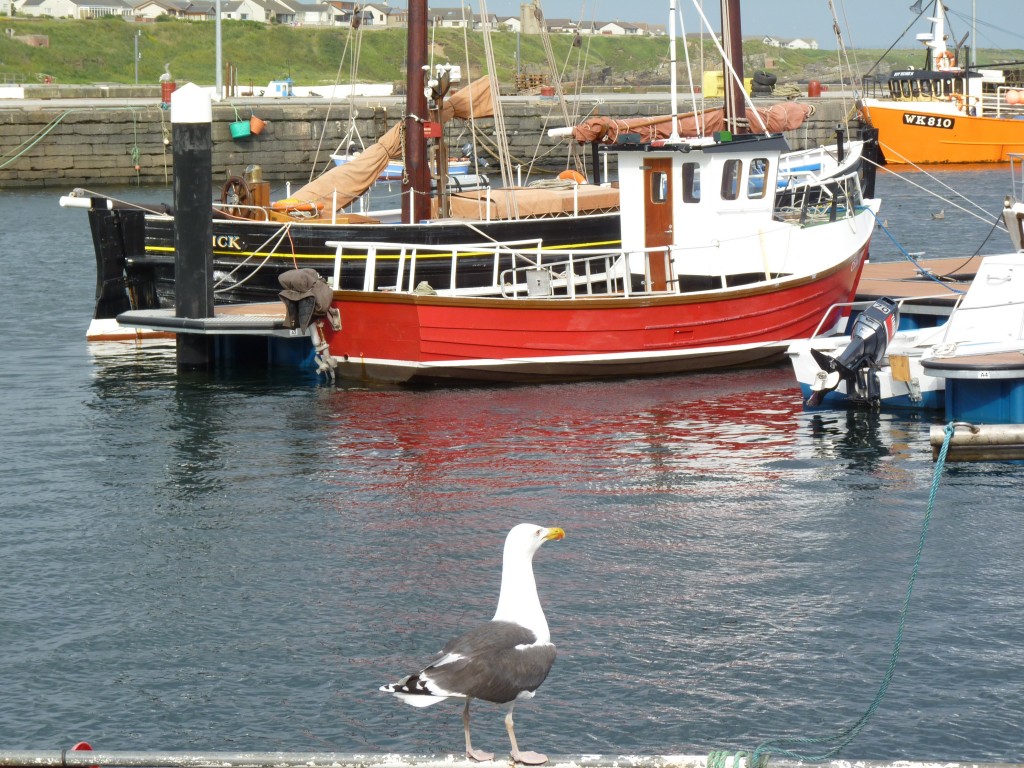Search Results for Tag: Scotland
Scotland’s waves surge ahead with climate-friendly energy
The waters between the north of Scotland and the Orkney islands have just been declared a Marine Energy Park. What does that mean? Well, I’m just back from a visit to the mainland coast in the Caithness region, Orkney and Edinburgh, headquarters of the Scottish government and the leading marine energy companies, where I was able to see for myself. The steady waves and strong currents of these waters make it an ideal location for devices to turn the power of the sea into electricity. I can quite understand why the Scottish and the UK governments want to heighten the international reputation of the region as a potential provider of clean, climate-friendly energy and speed up the development. Orkney is home to EMEC, the world-leading European marine Energy Centre, where developers from all over the world are testing a wide range of wave and tidal energy devices. The centre even has a grid connection, so that energy produced in the water can be fed in.
I will be writing more about this on DW’s Environment site in the weeks to come. I’ll also be reporting for our radio programe Living Planet. I certainly got the feeling that some of the marine energy devices are ready to move on from the test stage to commercial application and viability in the next couple of years.
Energy from waves or tides has the potential to generate 27GW of power in the UK alone by 2050, equivalent to the power generated from eight coal fired power stations, according to the UK government. Minister of State for Energy and Climate Change Greg Barker says the industry could sustain thousands of jobs in a sector worth a possible £15bn to the economy by 2050.
The Scottish Energy, Enterprise and Tourism Minister Fergus Ewing was equally upbeat when I interviewed him last week. More from the Minister and those directly involved in marine energy in the not-too-distant future. Meanwhile, well done Scotland for pushing ahead with renewable energy and “surfing the waves” towards the ambitious – but not unrealistic- target of 100% renewable electricity by 2020.
Wild weather – good for the climate?

Sorry, it took longer than I thought. The trouble with being an environment journalist is there are so many things happening at once sometimes it is hard to keep up extra projects like the “Ice Blog”. I have been working on all the material I brought back from a trip to Scotland (looking mainly at renewable energies), but at the same time following climate policy in different parts of the globe, President Obama’s disappointing concessions to the oil industry, preparations for the Bonn talks, etc.
Anyway, this is a picture taken at Whitelee windfarm. It’s the biggest onshore windfarm in Europe, with 140 turbines, situated in southern Scotland, close to the small village of Eaglesham.

Eaglesham is a conservation village, not far from the city of Glasgow, but a world apart, in many ways.
You can see from the picture it has the old-fashioned charm of a traditional Scottish village. I find the contrast to the high-tech windfarm just along the road fascinating. I think it’s very typical of 21st century Scotland, that combination of traditionalist features and modern technology. Of course people disagree about the effect of windfarms like this on the landscape etc, but given the advantages of wind power over fossil fuel plants, you have to compromise somewhere.
The devolved Scottish Parliament in Edinburgh has given top priority to renewable energy. While I was there,licenses were granted for marine energy projects, wave and tidal devices, off the northern coast of Scotland and Orkney. The experts and politicians say this could one day provide 10% of Europe’s energy requirement. The Pentland Firth, between the Scottish mainland and Orkney, has tremendous currents and so energy potential.
The Scottish government has high targets for increasing the share of renewables and reducing its emissions. They reject the pro-nuclear stance of the UK government in Westminster. A small country with just over 5 million people seeing itself as a kind of “laboratory”, bringing all the stakeholders together to come up with energy solutions that could serve as models for others? Sounds good? It might sound too much like political rhetoric, but I also interviewed Duncan McLaren, the CEO of Friends of the Earth Scotland, and his organisation backs up the Scottish figures and says the country can exceed its target of 55% renewable electricty by 2020 and reach the target earlier.
Scotland as marine energy Saudi Arabia?
Your ice blogger has been in Scotland over the past week, intrigued by claims by the country’s First Minister (Scotland is part of the UK but has a devolved parliament in Edinburgh) Alex Salmond that Scotland could become the “Saudi Arabia” of renewable energy, in particular marine energy.
The country is well suited to develop tidal, wave and wind energy and some interesting announcements were made while I was there.
Scotland has ambitious emissions reductions targets, higher than those of the UK as a whole.
More anon, when I have processed some of the material I collected. There should be some photos here by tomorrow at the latest.
Climate Update – and Pics from History
Apologies for a longish blog break, I have been busy on other matters.
Amongst other things, I’m working on what the media have to do to get the climate change message across.
On a recent trip to the German North Sea island of Norderney, I was pleasantly surprised to hear two couples, evidently 2 generations, discussing what would happen to those islands when sea levels rise. So the media they use have obviously been successful in getting that part of the message across.
On a subsequent visit to Scotland, I was horrified to hear people still doubting that our emissions are driving climate change.
So there’s still plenty work for us journalists to do.
Meanwhile, I’ve found a website that will fascinate Ice-Blog visitors.
Cambridge University’s Scott Polar Research Institute has a great collection of polar images, including Scott and Schackleton, but also images from more modern expeditions.
Now they have digitised negatives, daguerreotypes and lantern slides, and made them available online. You can find them here:
The “Freeze Frame” archive
Thanks to Anne. S. in Scotland for drawing my attention to this wonderful online archive.
And I’ll get back to my polar bear research, ahead of a historic meeting of the Contracting Parties to the Agreement on the Conservation of Polar Bears, which will take place in Tromsø, Norway, March 17-19, 2009. WWF says the meeting may be decisive for the fate of the world’s polar bears.
New Deal for the climate?
I’ve just been reading an interview with the UK premier Gordon Brown in the Observer. Like Barack Obama, he’s planning to “do a Roosevelt” with a “new deal” programme to tackle the ecomomic crisis.And Brown too is planning to include alternative energies and other climate-related projects.He is proclaiming a “historic opportunity” to reach a new international agreement on climate change. I’m sure the opportunity is there. The question is whether the industrialised countries can grasp it and come up with solutions to get India and China on board by the end of the year to come up with an effective post-Kyoto.I’m also sure Brown and Obama are right when they say fighting the recession will not come at the cost of the climate, but that the environment is part of the solution.
(See www.observer.co.uk)
Every crisis also opens up some opportunities. Perversely, the economic crisis could help solve the climate one. There’s plenty of scope for investing in – and ultimately making profit from- climate-saving measures. And at the risk of encouraging the old cliche about the “canny” Scots, I have to agree with my countryman GB (great initials for a British pm) that money is probably the key here.(As with most issues in our society, I fear). Financial incentives tend to motivate more people than the urge to save the planet for future generations. High petrol prices made people think about driving less or changing their cars, not saving the environment. So more power (preferably renewable) to the “green deals”.























Feedback